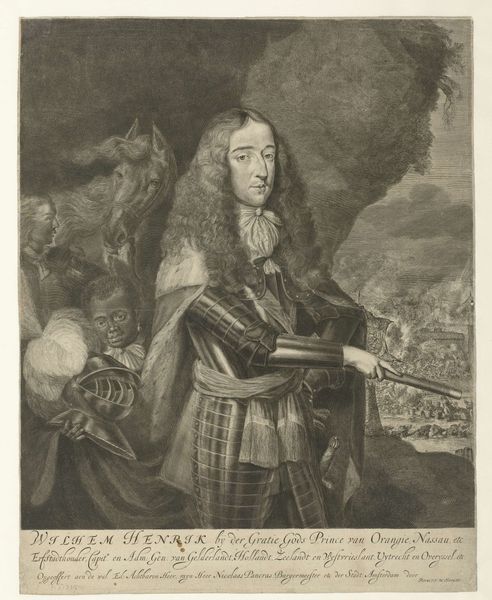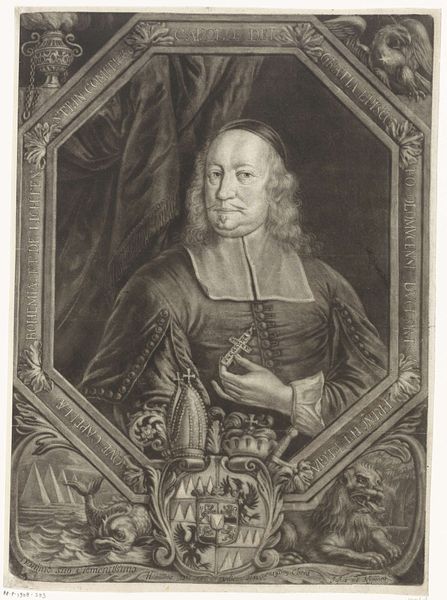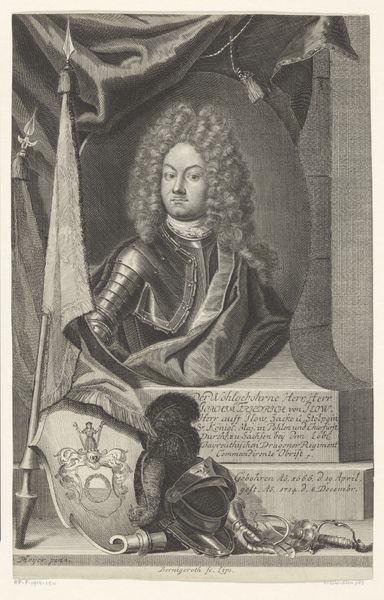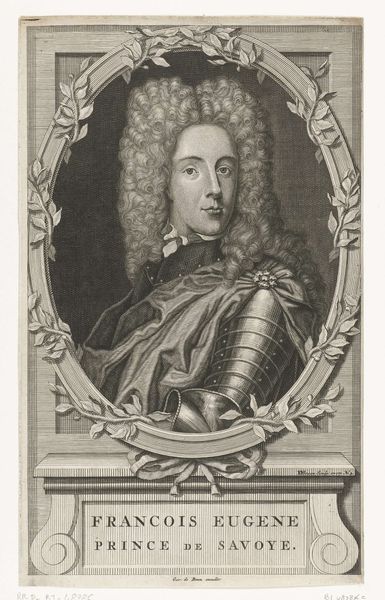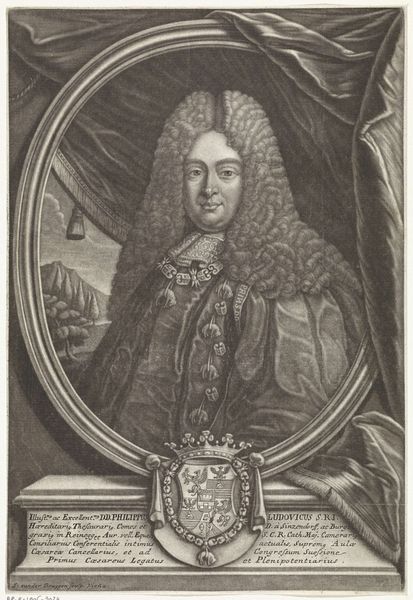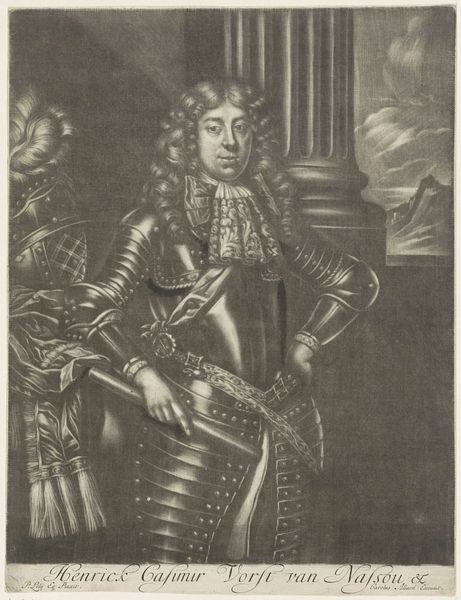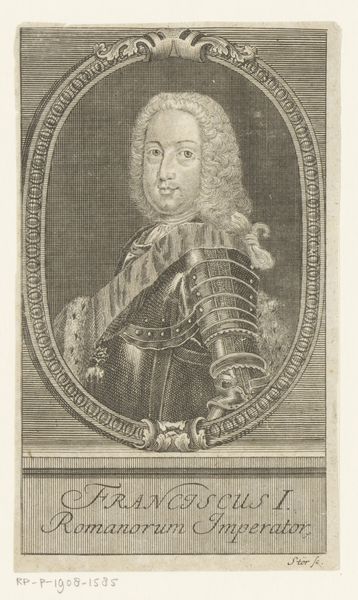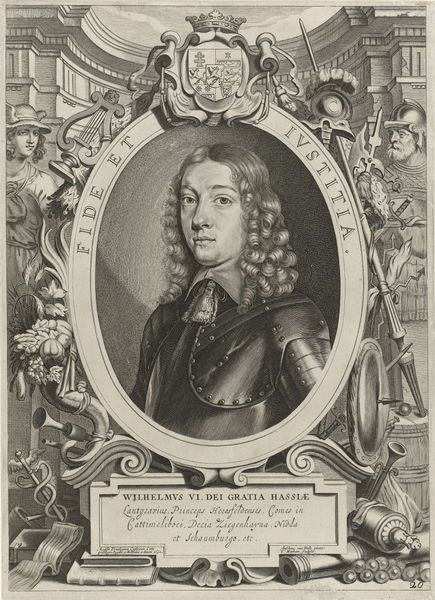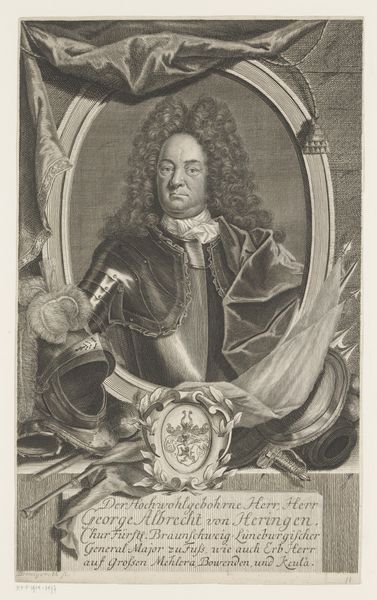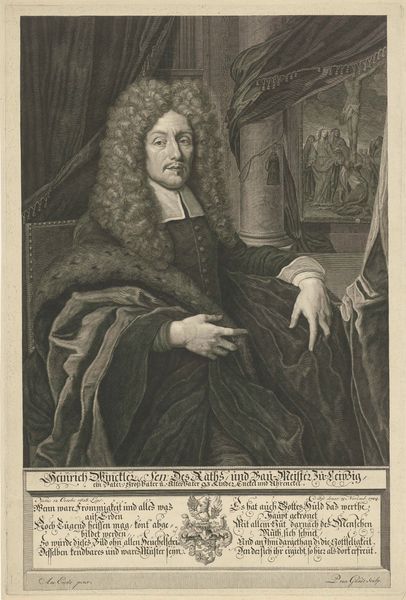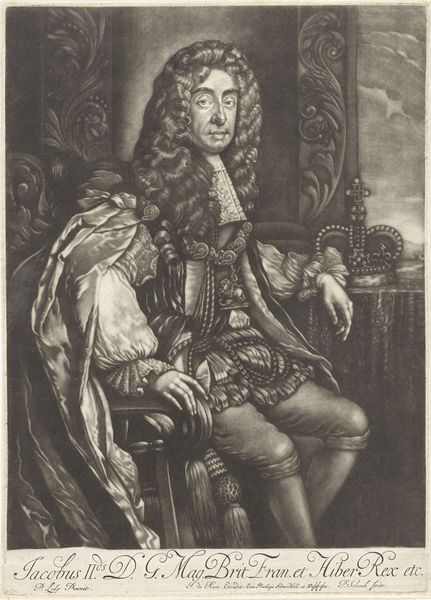
engraving
#
portrait
#
baroque
#
dutch-golden-age
#
old engraving style
#
figuration
#
portrait drawing
#
history-painting
#
engraving
Dimensions: height 508 mm, width 409 mm
Copyright: Rijks Museum: Open Domain
Editor: We're looking at an engraving titled "Portret van Willem III, prins van Oranje," dating roughly from 1673 to 1707, by A. van Winter. It's quite striking; the detail achieved through engraving is amazing. The inclusion of a battle scene in the background contrasts strangely with the formality of the portrait itself. How do you interpret the context and symbolism here? Curator: It's vital to remember that portraits, particularly during the Baroque and Dutch Golden Age periods, served a distinct political function. They weren’t simply likenesses, but carefully constructed images of power and authority. How does the setting behind Willem, along with the other figures beside him and his horse, speak to ideas about leadership? Editor: Well, the battle in the background is really intriguing since it shows that William of Orange is very engaged as a leader on the battlefield. Is the African child carrying William's helmet possibly meant to signify colonial power? Curator: Precisely. The figures surrounding Willem and the horse represent his dominion and reinforce ideas about class and race, acting as reminders of both his inherited status and of Dutch global power structures. The distribution of prints like these allowed for the wide dissemination of propaganda but also reinforced ideas about race, power, and gender at a particular time. Editor: It’s interesting how the portrait functions as both art and propaganda, showcasing the public image carefully crafted by the Dutch elite. I hadn't thought about how pervasive these images would have been. Curator: Indeed. Studying these images prompts important conversations about whose stories are told, who controls the narrative, and what impact those representations had – and continue to have – on shaping public perception and our understanding of history.
Comments
No comments
Be the first to comment and join the conversation on the ultimate creative platform.
